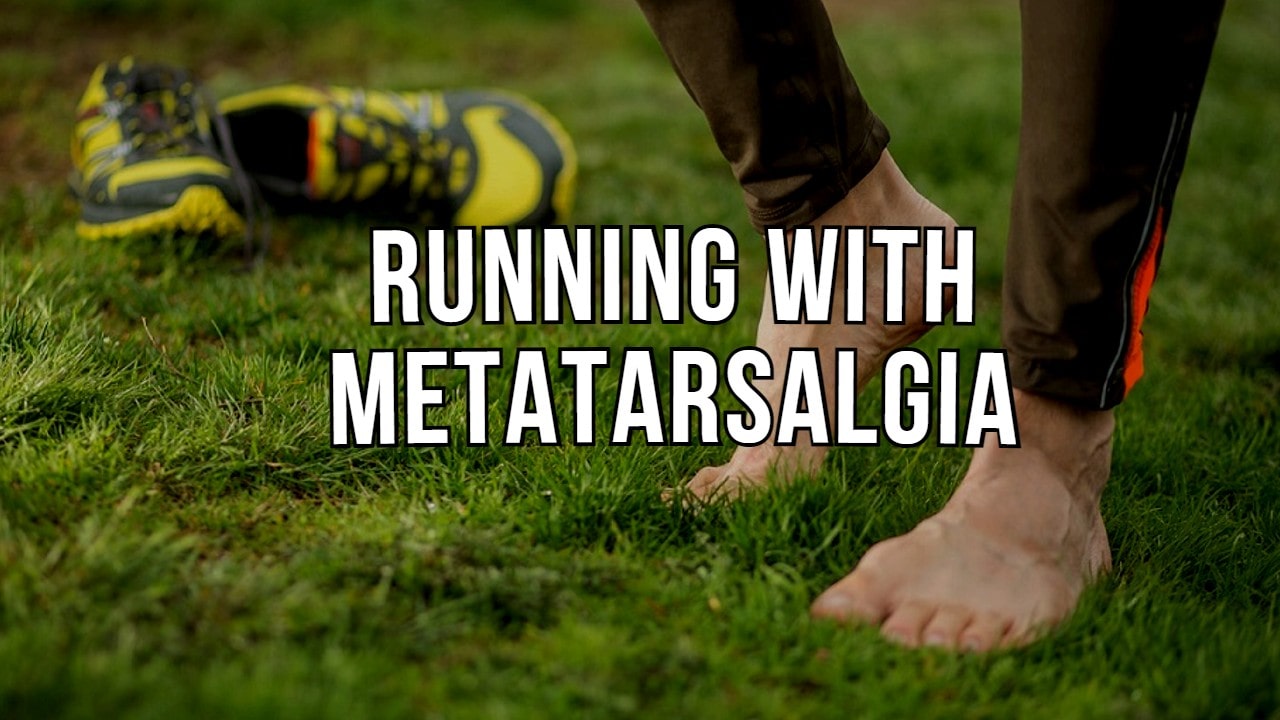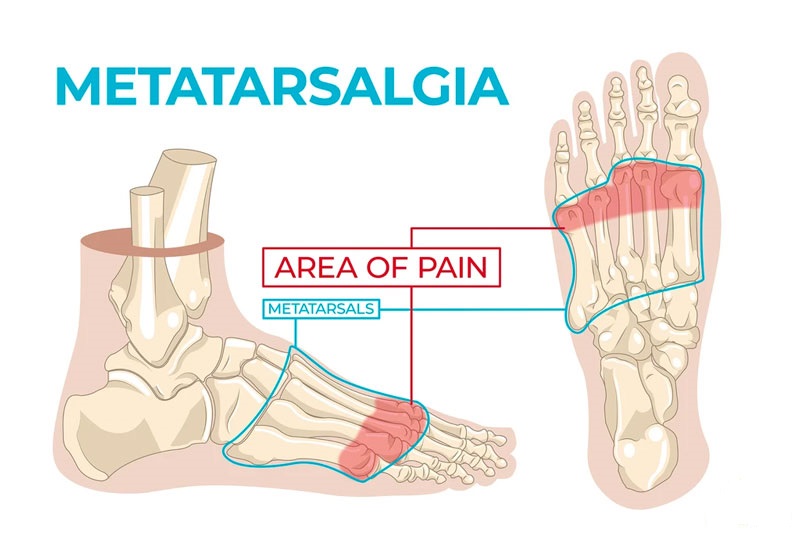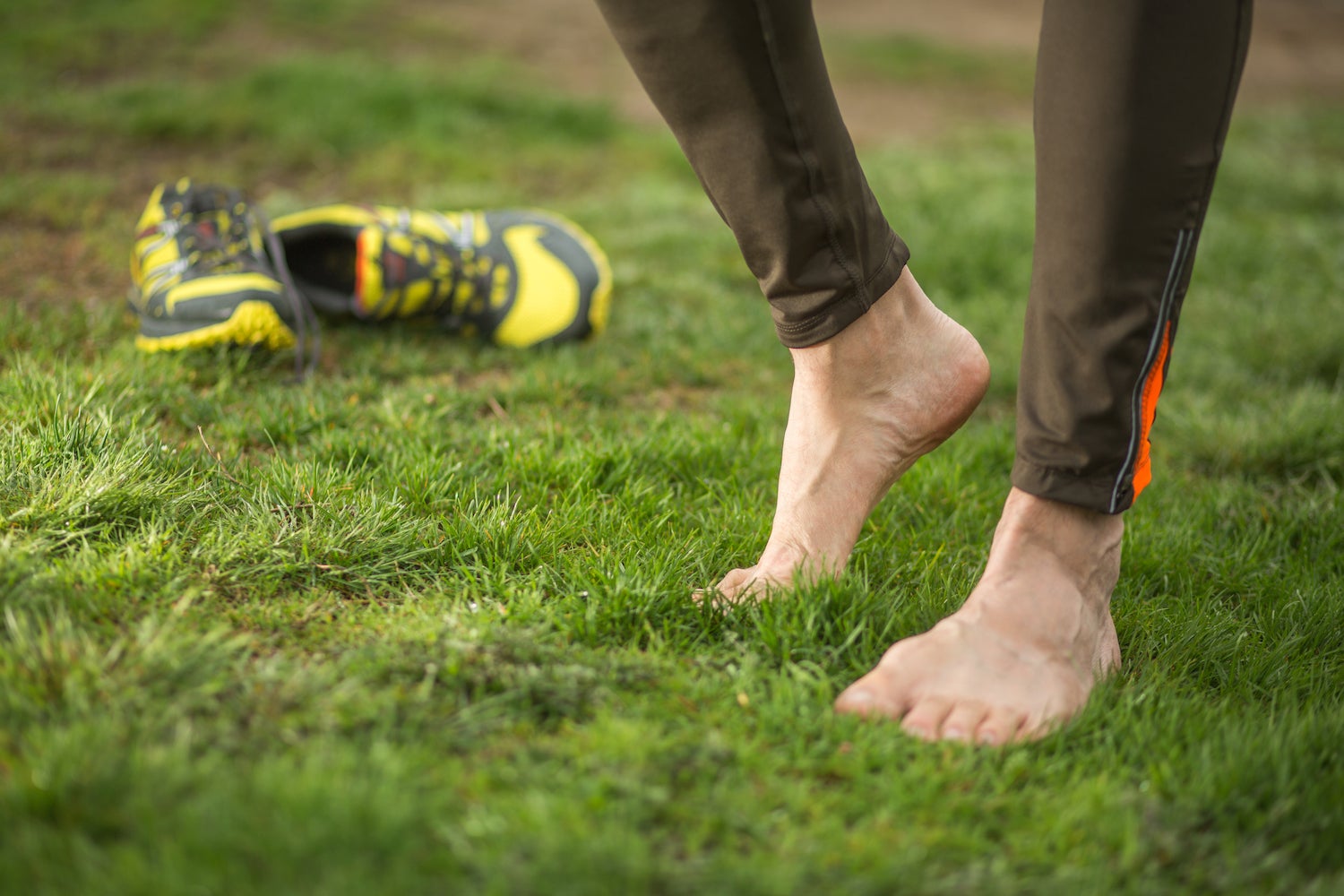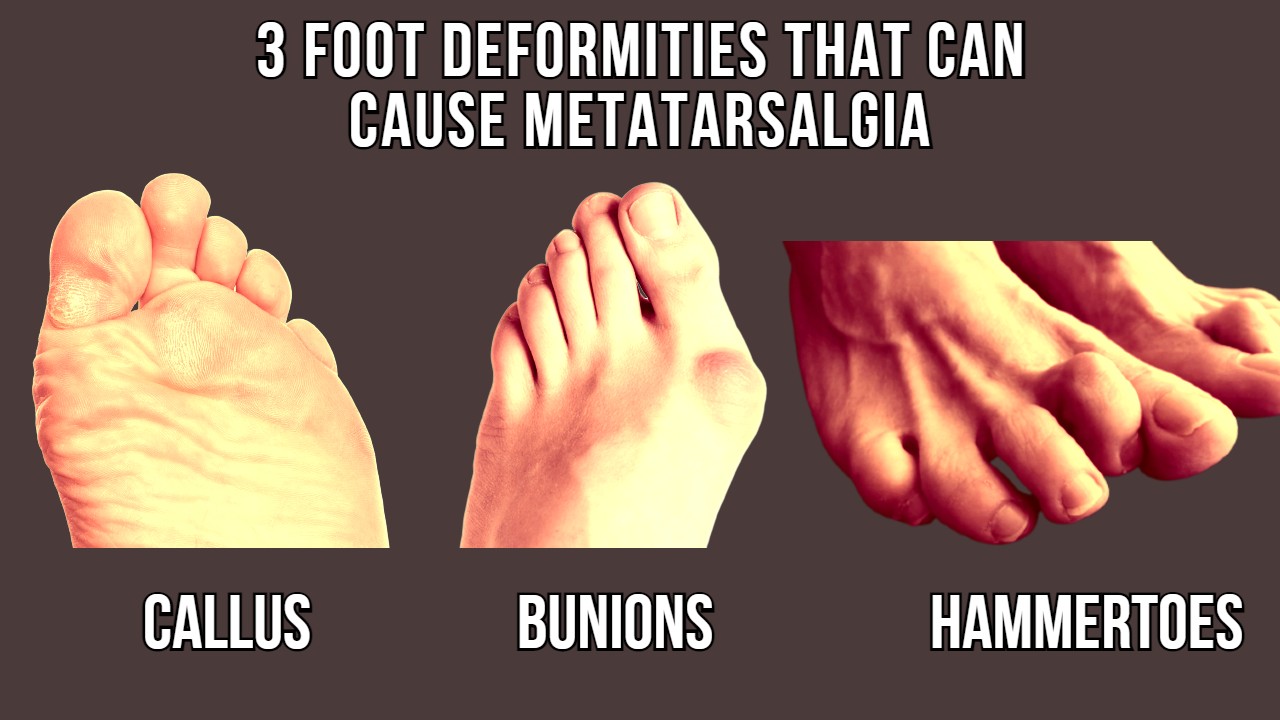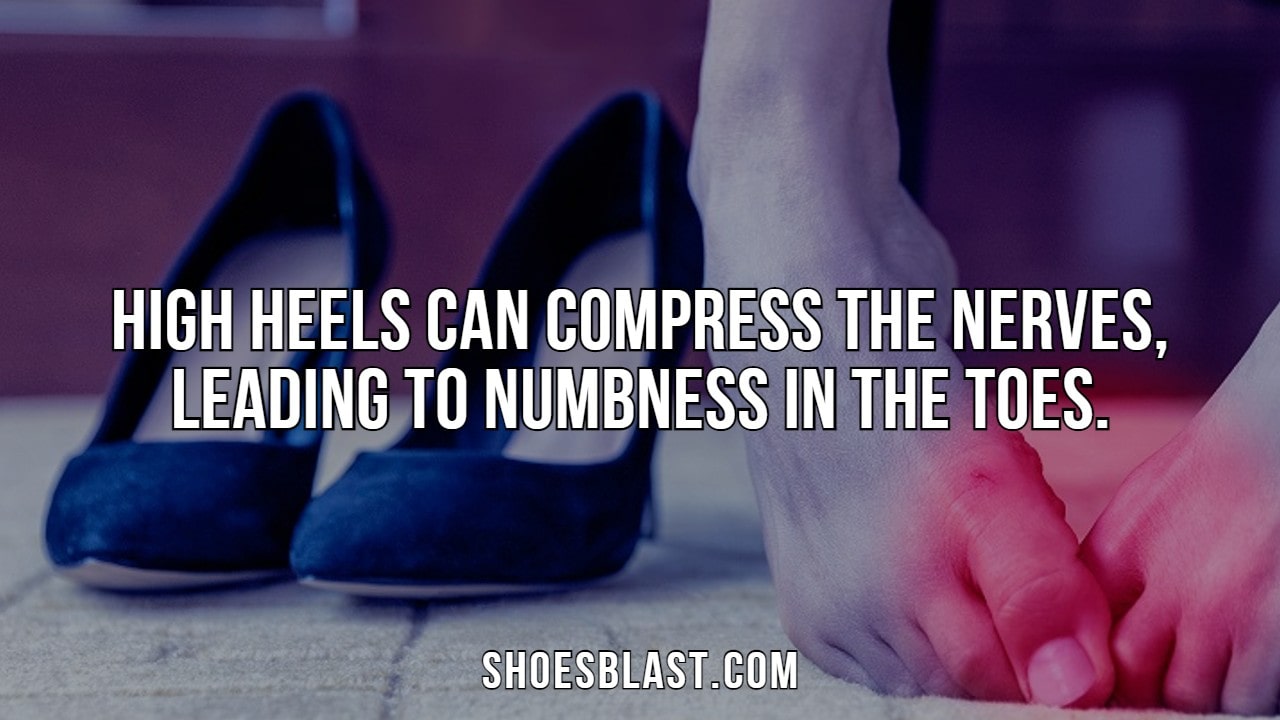In this Article
Hey runner! Are you familiar with this name, or this condition? Maybe not, but you might have familiar symptoms representing this ‘pointed burning’ condition that most runners and long-distance walking individuals could face on their feet. Let’s discover it together!
What Is Metatarsalgia?
Your foot is connected to your toes by the five metatarsals, a group of five bones. The point at which the metatarsals meet the phalanges (toe bones) is called the metatarsal head. It’s kind of like the first knuckle on your foot.
This area is particularly vulnerable to extra strain and pressure, which can result in inflammation and pain known as Metatarsalgia.
This is the area between the arches and toes on the bottom of the foot. It gives an intense feeling of pain with burning sensations which affects the normal gait (way of walking, running, etc. in the correct alignment of the body) and makes the person unable to do daily living routines.
Symptoms of Metatarsalgia
The primary symptom of metatarsalgia is the occurrence of pain in the metatarsal area under the ball of the foot. It may be accompanied by swelling, inflammation, or bruising, but sometimes it may not. In the same way, symptoms of metatarsalgia can occur quickly or may develop over time. Its common symptoms are:
- Sharp, aching, or burning pain in the ball of the foot is the most common symptom that is founded. This pain can be extremely felt when you try to stand and put pressure on your foot to bear the weight.
- You can feel numbness or tingling in your toes.
- A pointed sense of pain is just like the feel of a pebble in your shoe.
How To Assure if it is Metatarsalgia?
Because several foot problems can develop symptoms pretty much similar to those symptoms which occur in metatarsalgia. So in this case you need to consult with your doctor if the symptoms mentioned above are not getting away for more than 2-3 weeks.
Your physician or therapist will begin an assessment to examine metatarsalgia by asking about the symptoms you are facing. Your therapist/physician will examine your foot manually to pinpoint the source and location of your pain.
For this examination, they can ask you to stand, walk and sit and also can ask about your daily living routines to reach the possibility of the pain’s cause. The examination can also be concluded on the need for an X-ray for identifying or confirming the other possible foot deformities.
Who Are More Likely To Have Metatarsalgia?
According to many orthopedic experts around the world, the most likely individuals who have higher risks of developing this condition are:
1- Runners
Marathon runners are usually at higher risk of developing this condition due to their excessive forefoot work while running. There are significant ground reaction forces that are absorbed particularly in the front of the foot when a person runs.
According to research in 2004 at Baylor College of Medicine, Texas, U.S, it was found that the forefoot absorbs as much as 110 tons of cumulative force per mile during running, which builds your metatarsal bones and MTP joint an impressive set of shock absorbers.
When you push off the ground, your whole body weight is transferred to the metatarsals. If the weight distribution across the foot is uneven, the metatarsals can become irritated and inflamed, resulting in Metatarsalgia later on (John Cianca, M.D., 2004). This is why runners are most likely to have this condition.
See best running shoes for metatarsal pain Or Morton’s Neuroma
2- Obese People
Almost all of your body weight transfers to your forefoot (front of the foot). So more weight means more pressure is being exerted on your metatarsals. An open threat of Metatarsalgia pops up here.
3- People With High Arches
Certain foot shapes matter a lot in developing risks of Metatarsalgia. Various researches have shown that people who are having high arches in the foot are more prone to Metatarsalgia. High arches increase the pressure on metatarsal bones.
4- People With 3-Foot Deformities
According to the American Orthopaedic Foot & Ankle Society (AOFAS), people with the following foot deformities are quite vulnerable to metatarsalgia:
- Callus
- Bunions
- Hammertoe
1- Callus
If your second toe is longer than the big toe, it will shift more weight than normal to the second metatarsal head. In this way, the bone may take on additional weight.
This extra pressure could lead to the development of a callus or an accumulation of skin cells. The combination of the extra weight on the bone and the callus can also result in Metatarsalgia pain.
2- Bunions
Deformity in the big toe of our foot causes bunions. Because the big toe’s metatarsal bone cannot support the weight it needs to, the weight shifts to the smaller metatarsal bones, leading to metatarsalgia.
3- Hammertoe
If the tendons that support our toes become imbalanced, this deformity will develop. This can cause the metatarsal bones to push into the ground, increasing the pressure on them and consequently causing
metatarsalgia. (see best running shoes for hammertoes)
Also, see Running with hammertoes.
Your Shoes Can Be The Biggest Cause Of Metatarsalgia
1- Tight Shoes
If you are wearing shoes that do not fit properly on your feet, kindly save some dollars to buy a comfortable shoe pair before this painful condition makes you spend money.
Shoes that are too tight squeeze the feet and increase pressure, whereas loose shoes allow the feet to slide and rub.
2- High Heels
Similarly, if your shoes have high heels than your forefoot level, this will transfer extra weight to the front of your foot. This is the commonest cause of developing metatarsalgia among normal individuals who have no foot deformities. It is especially found in women
Shoes lacking supportive insoles
Additionally, athletes who wear shoes that lack support and padding may also experience this problem.
Can You Run With Metatarsalgia?
If it is diagnosed that you are suffering from metatarsalgia, it is best to avoid running. Otherwise, you can decrease the amount of lapse or running intensity. But due to the direct impact on the ball of the foot and metatarsals, it is generally recommended to put your foot on complete rest with no overstress on the forefoot
How Can A Runner Prevents Metatarsalgia When Running?
Remember these simple 4 tips to prevent metatarsalgia before you go for a run:
1. Wearing Appropriate shoes:
Wearing the right running shoes should be the first concern before going for a run. Ensure that the toe box of your shoe is wide enough so your toes can spread out freely. Prefer a thicker, soft foam insole under my foot.
2- Use Of Met Pads & Tappings:
If your shoes do not provide the right support, the use of tape or shoe inserts such as metatarsal pads, insoles, and orthotics can provide quick short-term relief without investing in new shoes. Besides providing support to the foot
and surrounding ligaments, they can also retrain your muscles so that they better coordinate with higher-stressed activities.
3- Fluctuate Your Training:
As metatarsalgia is an overuse injury, so try to avoid back-to-back stress and the constant impact of running on your feet. And this will be helped by including multiple low-impact exercises that will give rest to your feet from constant
the stress of running.
See the Benefits of running in the morning.
4- Notice & Treat Each Symptom:
Any person especially an athlete should not ignore pain signals from their body since it can lead to chronic problems. So it is always best to take care of your symptoms as soon as you begin to notice them so they don’t worsen.
Before medications, you can use the above elaborated easy tips in the 8 the sub-heading of this article, to cure acute symptoms at home.
How Can You Relieve Pain In The Ball OF Your Foot?
These are some of the inexpensive and easiest tips to relieve and ease your metatarsalgia pain.
1. Icing:
The first tip to highly consider is to ice the affected area several times a day every 2-3 hours or at least twice a day. Apply ice packs for about 15-20 minutes each time. Wrap the ice packs in a thin towel to protect your skin.
2. Wear comfortable shoes:
Don’t wear shoes that are too tight or too loose, and avoid wearing high heels. Wear shoes that are appropriate for your sport.
3. Metatarsal pads:
The padding is placed ahead of the metatarsal bone in your shoes to help relieve pain in that area.
4. Pay attention to supporting your Foot’s arch:
Your foot arch is also very necessary to get supported properly in order to minimize stress on the metatarsal bones and improve foot function. So place foot arch-supporting pads properly and avoid walking barefoot.
5. Pain-Relieving Medications:
Your general physician may recommend you take paracetamol. Ibuprofen or aspirin should not be taken for the first 48 hours after the pain’s first symptom.
Do Metatarsal Pads Help In Relieving Pain?
A big yes!
Metatarsal pads which are also known as ‘Met pads’ are relief-giving comforters added to your footwear. The metatarsal bones of our foot are supported in their natural position and spacing by a met pad, which keeps them away from becoming compressed.
It also assists in the natural positioning of your shock-absorbing tissues, which helps to keep your feet farther from absorbing much more stress.
Metatarsal pads also aid in the spread of the transverse foot arch, allowing the nerves and blood vessels that travel between the metatarsal heads greater space to pass through and reach the toes.
How long does to Stop Running With Metatarsalgia?
The answer to this question depends on the severity of your condition and how you are responding to treatment. In most cases, it is recommended that you stop running for a minimum of two weeks. During this period, you should rest your foot and apply ice to reduce swelling. You can also take over-the-counter pain medications, such as ibuprofen, to help reduce pain and inflammation.
If your symptoms persist after two weeks, it is important to consult with your doctor. They will be able to advise you on the best course of treatment and will likely recommend taking a break from running for a longer period of time. Depending on the severity of the condition, this may be up to six weeks or even more. During this break, you should focus on rehabilitating the foot and strengthening the muscles in the area to reduce the risk of re-injury.
When you are ready to return to running, it is important to do so gradually. Start with light jogging and add more distance and intensity over time. Make sure to be mindful of how your foot is feeling and take regular breaks if needed. If you experience any pain or discomfort, stop immediately and consult your doctor.
Is Surgery Needed For Metatarsalgia?
In severe cases of metatarsalgia, surgery may be recommended. The metatarsal bones may need to be realigned surgically if there is considerable pain and inflammation that does not go away.
To relieve pressure on the ball of the foot, the surgeon cuts the metatarsal bone right behind the toe. But its ratio is only 20% among the people who suffer from this condition. More than 80% of people get recovery from metatarsalgia by practicing certain tips and using met pads and medications.
References
Metatarsalgia. (2016). Retrieved June 2022, from The American College of Foot & Ankle Orthopedics &
Medicine:
Andrew Pao, MD. (2020). FOREFOOT PAIN (METATARSALGIA). Retrieved from American Orthopaedic Foot &
Ankle Society (AOFAS):
AOFAS. (2018, October). Metatarsalgia. Retrieved June 10, 2022, from American Orthopaedic Foot & Ankle
Society:
John Cianca, M.D. (2004, October 07). Metatarsalgia. Retrieved 2022, from Runner’s World:
Metatarsalgia (forefoot pain). American Orthopaedic Foot & Ankle Society.
Accessed Aug. 09, 2022.
Espinosa N, et al. Metatarsalgia. Journal of the American Academy of Orthopaedic Surgeons. 2010;18:474.
Metatarsalgia. The American College of Foot & Ankle Orthopedics & Medicine. Accessed June. 08,
2022
Imboden JB, et al. Approach to the patient with foot & ankle pain. In: Current Diagnosis & Treatment:
Rheumatology. 3rd ed. New York, NY: The McGraw-Hill Companies; 2013. .
Accessed June. 6, 2022

DPT, Jinnah Medical College.
Sports Injuries and Rehabilitation & Sports Nutrition
Martial Arts and Fitness Trainer
Senior Brown Belt – Kyokushinryu Karate, IKAK, Japan.

